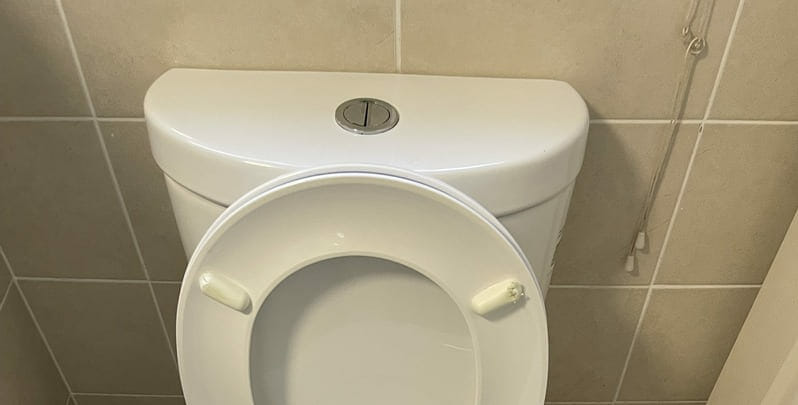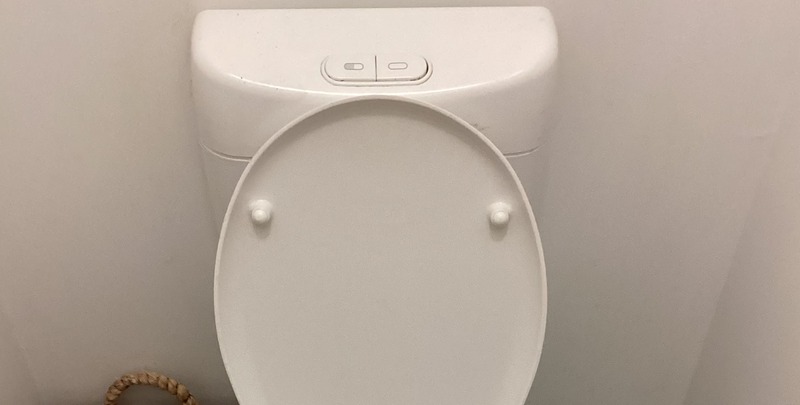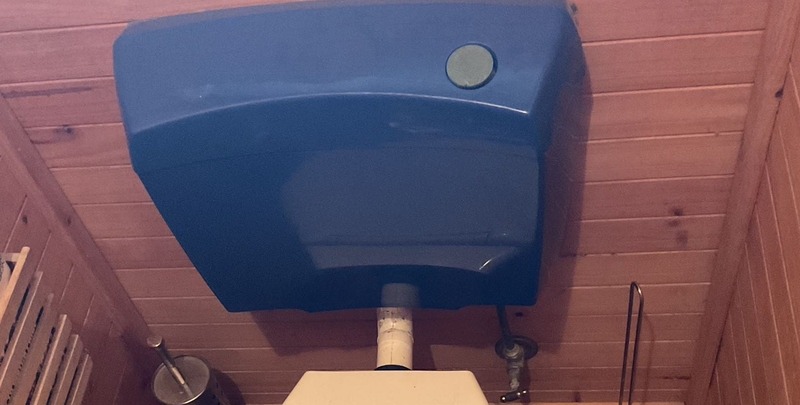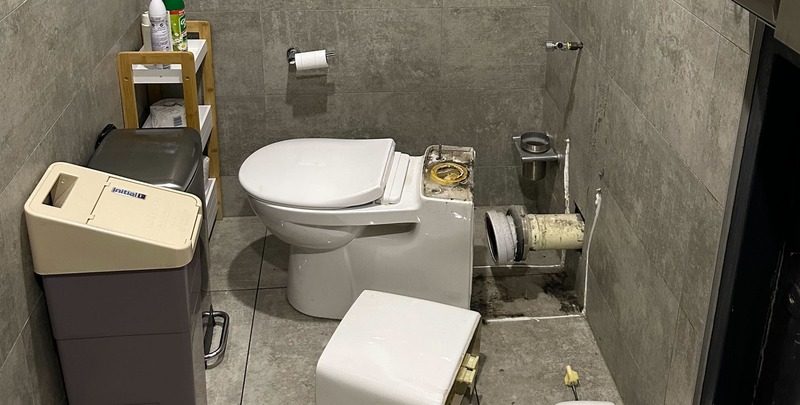
Do You Want Two Flushing Options or One?
When it comes to choosing the perfect toilet for your home, the invention of the dual flush toilet has brought many functional, design and efficiency benefits.
In Australia, all toilets sold must be dual flush, for reasons we will discuss further on. This has been the standard across the country since the early 1990s. As the name suggests, dual flush cisterns offer two flush options: a full flush and a half flush. This aims to promote water conservation and reduce utility costs over time.
Of course, there will no doubt be many homes across Australia that still have the old single flush toilet. For decades they were the traditional choice in many households. They typically offer a single flushing option, which uses a fixed amount of water for every flush.
For those that do still have a single flush toilet in their home, there is no better time than now to upgrade to a new dual flush system. Let’s delve into the pros and cons of dual flush toilets, including water efficiency, cost-effectiveness and maintenance needs, and explore why it’s worth upgrading your existing single flush toilet.
By the end, you’ll have a better understanding of which type of cistern is the right fit for your specific needs, helping you make an informed decision for your home. If in doubt, make sure you seek professional advice.
Key Differences Between Dual Flush and Single Flush
The flushing mechanism plays a crucial role in determining cistern performance, water efficiency and overall convenience.
Understanding the key differences between these two types can help you make an informed decision when choosing whether or not to upgrade your toilet.
- Flushing options: The most significant difference between a dual flush toilet and single flush cisterns lies in their flushing options. Dual flush models offer two distinct flush modes: a full flush for solid waste and a half flush for liquid waste. This versatility allows for better water management and conservation. In contrast, single flush toilets have only one flushing option, which is typically designed for flushable solids.
- Water efficiency: Water conservation is a growing concern around the world, and toilets are responsible for a significant portion of household water usage. Dual flush cisterns excel in water efficiency by providing the option to use less water for liquid waste, reducing overall water consumption. According to the City of Melbourne website, a dual flush uses 5 litres per week compared to 11 litres by a single flush unit (with an average of 35 flushes per week).
- Cost-effectiveness: In terms of long-term cost-effectiveness, dual flush toilets can be advantageous. While they may have a higher upfront cost compared to single flush models, the potential savings in water bills can offset this initial investment. By using less water for liquid waste, dual flush toilets can lead to substantial savings over time.
- Maintenance and durability: When it comes to maintenance, single flush models are generally considered easier to maintain due to their simpler design and fewer moving parts. Dual flush cisterns, with their more complex mechanism, may require occasional maintenance and repairs.
- Environmental impact: Dual flush cisterns have gained popularity due to their environmentally friendly design. By offering a water-saving option for flushable liquids, they contribute to the conservation of this precious resource.
Understanding how a dual flush toilet differs from single flush cisterns and the key differences between them can help you determine which option aligns best with your priorities.
Whether you value water conservation, cost-effectiveness or ease of maintenance, weighing these factors will ultimately guide you in making the right choice for your home.

The Pros and Cons of Dual Flush Toilets
Let’s take a closer look at the advantages and disadvantages of the dual system.
Pros:
- Water efficiency: One of the primary advantages of dual flush toilets is their water-saving feature. These toilets offer two flushing options: a full flush for solid waste and a reduced flush for liquid waste. By choosing the appropriate flush, users can significantly reduce water consumption compared to single flush cisterns.
- Cost savings: Dual flush toilets can lead to cost savings in the long run. As they use less water per flush, they contribute to lower water bills, making them a cost-effective option for households and businesses.
- Environmental benefits: With their water-saving feature, dual flush toilets help conserve water resources and reduce the strain on the environment. By using less water, these toilets contribute to water conservation efforts and promote sustainability.
- Customisable flushing: A dual flush toilet can provide users with the flexibility to select the appropriate flush based on the waste being disposed of. This customisation not only saves water but also helps prevent clogs and reduces the need for additional maintenance.
- Increased hygiene: Due to the efficient flushing mechanism, dual flush models often have a better flush power, ensuring thorough waste removal and reducing the chances of odours and bacteria buildup.
Cons:
- Higher initial cost: Dual flush cisterns generally have a higher upfront cost compared to single flush toilets. However, considering the long-term water savings, the initial investment can be offset over time.
- Complex mechanism: Dual flush toilets have a more intricate flushing system compared to single flush toilets, partly due to having dual flush buttons, which can occasionally result in higher maintenance or repair costs.
Overall, the pros of water efficiency, cost savings, environmental benefits, customisation, and improved hygiene outweigh the cons associated with dual flush models. Let’s now take a detailed look at …

The Pros and Cons of Single Flush Toilets
Are there genuine reasons to stick with the tried-and-true traditional cistern?
Pros:
- Simplicity: Single flush toilets have a straightforward design with a single flushing mechanism, making them easy to operate and understand.
- Lower initial cost: Single flush cisterns are generally less expensive to purchase compared to dual flush models, making them a budget-friendly option.
- Widespread availability: Though single flush models are no longer available to buy, their parts and components are still easily accessible, making repairs single and convenient.
Cons:
- Water wastage: Single flush toilets typically use a fixed amount of water for each flush, regardless of the waste load. This can result in unnecessary water wastage, especially for liquid waste that requires less water to flush effectively.
- Environmental impact: Due to their higher water consumption, single flush toilets contribute to higher water usage and can strain local water resources. They also have a larger carbon footprint compared to more water-efficient options.
- Limited water-saving options: Single flush cisterns do not offer the flexibility of water-saving options like dual flush cisterns, which allow users to choose between a lower or higher water volume flush based on the type of waste.
Maintenance considerations:
- Clogging risk: Single flush toilets may be more prone to clogging, especially if large amounts of toilet paper or solid waste are flushed.
- Cleaning efficiency: Single flush cisterns may require more frequent cleaning, as the fixed water volume may not be sufficient to effectively clean the bowl, leading to stains and odours over time.
While single flush models are simple and affordable, they lack water-saving capabilities and have a higher environmental impact due to their water consumption. Additionally, they may require more maintenance in terms of clogging and cleaning.

The Last Flush
When it comes to the dual flush vs single flush toilet debate, it’s clear that the dual flush cistern emerges as the winner in terms of water conservation and efficiency.
Its innovative design allows users to choose between a low-volume flush for liquid waste and a higher-volume flush for solid waste, resulting in significant water savings over time.
Single flush toilets, on the other hand, use a fixed amount of water for every flush, which can be wasteful and contribute to unnecessary water consumption. With the dual flush cistern, individuals can contribute to water conservation efforts while still maintaining optimal hygiene.
It could be time to upgrade your existing toilet. Making the switch to a dual flush is a smart and eco-friendly choice for any household or establishment concerned with sustainability and resource preservation.
If you’re considering a new toilet dual flush cistern, contact the experts at Mr Emergency today. We’ll help you save water and save money.
Please note: This information is provided for advice purposes only. Regulations differ from state to state, so please consult your local authorities or an industry professional before proceeding with any work. See our Terms & Conditions here.


